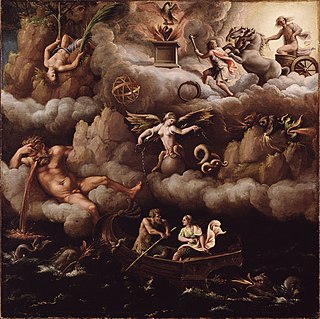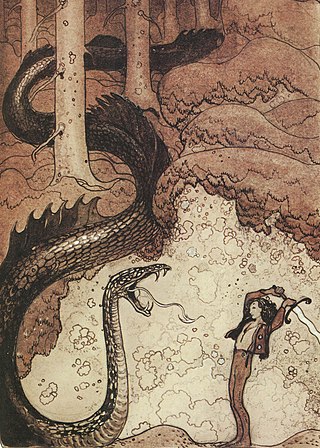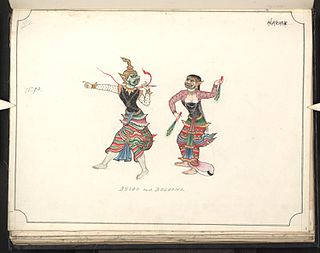
A dragon is a large magical legendary creature that appears in the folklore of multiple cultures worldwide. Beliefs about dragons vary considerably through regions, but dragons in Western cultures since the High Middle Ages have often been depicted as winged, horned, and capable of breathing fire. Dragons in eastern cultures are usually depicted as wingless, four-legged, serpentine creatures with above-average intelligence. Commonalities between dragons' traits are often a hybridization of feline, reptilian, mammal, and avian features. Scholars believe large extinct or migrating crocodiles bear the closest resemblance, especially when encountered in forested or swampy areas, and are most likely the template of modern Asian dragon imagery.

A legend is a genre of folklore that consists of a narrative featuring human actions, believed or perceived to have taken place in human history. Narratives in this genre may demonstrate human values, and possess certain qualities that give the tale verisimilitude. Legend, for its active and passive participants, may include miracles. Legends may be transformed over time to keep them fresh and vital.

A monster is a type of fictional creature found in horror, fantasy, science fiction, folklore, mythology and religion. Monsters are very often depicted as dangerous and aggressive, with a strange or grotesque appearance that causes terror and fear, often in humans. Monsters usually resemble bizarre, deformed, otherworldly and/or mutated animals or entirely unique creatures of varying sizes, but may also take a human form, such as mutants, ghosts, spirits, zombies, or cannibals, among other things. They may or may not have supernatural powers, but are usually capable of killing or causing some form of destruction, threatening the social or moral order of the human world in the process.

The European dragon is a legendary creature in folklore and mythology among the overlapping cultures of Europe.

In New Jersey and Philadelphia folklore in the United States, the Jersey Devil is a legendary creature said to inhabit the forests of the Pine Barrens in South Jersey. The creature is often described as a flying biped with hooves, but there are many variations. The common description is that of a bipedal kangaroo-like or wyvern-like creature with a horse- or goat-like head, leathery bat-like wings, horns, small arms with clawed hands, legs with cloven hooves, and a forked or pointed tail. It has been reported to move quickly and is often described as emitting a high-pitched "blood-curdling scream".

The lindworm, also spelled lindwyrm or lindwurm, is a mythical creature in Northern and Central European folklore that traditionally has the shape of a giant serpent monster living deep in the forest. It can be seen as a sort of dragon.

English folklore consists of the myths and legends of England, including the English region's mythical creatures, traditional recipes, urban legends, proverbs, superstitions, and folktales. Its cultural history is rooted in Celtic, Christian, Nordic and Germanic folklore.

A spriggan is a legendary creature from Cornish folklore. Spriggans are particularly associated with West Penwith in Cornwall.
The salamander is an amphibian of the order Urodela which, as with many real creatures, often has been ascribed fantastic and sometimes occult qualities by pre-modern authors not possessed by the real organism. The legendary salamander is often depicted as a typical salamander in shape with a lizard-like form, but is usually ascribed an affinity with fire, sometimes specifically elemental fire.
Mythic humanoids are legendary, folkloric, or mythological creatures that are part human, or that resemble humans through appearance or character. Each culture has different mythical creatures that come from many different origins, and many of these creatures are humanoids. They are often able to talk and in many stories they guide the hero on their journey.

A legendary creature is a type of fantasy entity, typically a hybrid, that has not been proven and that is described in folklore, but may be featured in historical accounts before modernity.

A wide variety of mythical creatures are found in Burmese mythology. Many Burmese creatures are part human or creatures capable of assuming human form. Most mythical creatures are endowed with humanistic mentalities, ability to converse with humans and also supernatural powers. During the 20th century, the role and diversity of Burmese mythical creatures were diversified by Shwe Thway comics which depicted the life of the Buddha, the Jataka tales and Burmese history.
An Irshi is a type of mythical being or legendary fairy-like creature in Turkic folklore, a form of spirit, often described as supernatural or preternatural.